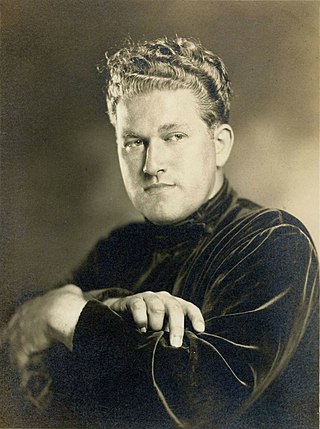
August William Derleth was an American writer and anthologist. He was the first book publisher of the writings of H. P. Lovecraft. He made contributions to the Cthulhu Mythos and the cosmic horror genre and helped found the publisher Arkham House. Derleth was also a leading American regional writer of his day, as well as prolific in several other genres, including historical fiction, poetry, detective fiction, science fiction, and biography. Notably, he created the fictional detective Solar Pons, a pastiche of Arthur Conan Doyle's Sherlock Holmes.
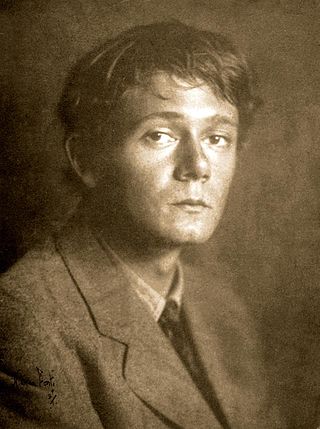
Clark Ashton Smith was an American writer and artist. He achieved early local recognition, largely through the enthusiasm of George Sterling, for traditional verse in the vein of Swinburne. As a poet, Smith is grouped with the West Coast Romantics alongside Joaquin Miller, Sterling, and Nora May French and remembered as "The Last of the Great Romantics" and "The Bard of Auburn". Smith's work was praised by his contemporaries. H. P. Lovecraft stated that "in sheer daemonic strangeness and fertility of conception, Clark Ashton Smith is perhaps unexcelled", and Ray Bradbury said that Smith "filled my mind with incredible worlds, impossibly beautiful cities, and still more fantastic creatures".
Weird fiction is a subgenre of speculative fiction originating in the late 19th and early 20th centuries. Weird fiction either eschews or radically reinterprets traditional antagonists of supernatural horror fiction, such as ghosts, vampires, and werewolves. Writers on the subject of weird fiction, such as China Miéville, sometimes use "the tentacle" to represent this type of writing. The tentacle is a limb-type absent from most of the monsters of European folklore and gothic fiction, but often attached to the monstrous creatures created by weird fiction writers, such as William Hope Hodgson, M. R. James, Clark Ashton Smith, and H. P. Lovecraft.

Donald Albert Wandrei was an American science fiction, fantasy and weird fiction writer, poet and editor. He was the older brother of science fiction writer and artist Howard Wandrei. He had fourteen stories in Weird Tales, another sixteen in Astounding Stories, plus a few in other magazines including Esquire. Wandrei was the co-founder of the prestigious fantasy/horror publishing house Arkham House.
A Cthulhu Mythos anthology is a type of short story collection that contains stories written in, or related to, the Cthulhu Mythos genre of horror fiction launched by H. P. Lovecraft. Such anthologies have helped to define and popularize the genre.

The Outsider and Others is a collection of stories by American writer H. P. Lovecraft. It was released in 1939 and was the first book published by Arkham House. 1,268 copies were printed. It went out of print early in 1944 and has never been reprinted.

Beyond the Wall of Sleep is a collection of fantasy, horror and science fiction short stories, poems and essays by American author H. P. Lovecraft. It was released in 1943 and was the second collection of Lovecraft's work published by Arkham House. 1,217 copies were printed. The volume is named for the Lovecraft short story "Beyond the Wall of Sleep".

Marginalia is a collection of Fantasy, Horror and Science fiction short stories, essays, biography and poetry by and about the American author H. P. Lovecraft. It was released in 1944 and was the third collection of Lovecraft's work published by Arkham House. 2,035 copies were printed.

Out of Space and Time is a collection of fantasy, horror and science fiction short stories by American writer Clark Ashton Smith. It was released in 1942 and was the third book published by Arkham House. 1,054 copies were printed. A British hardcover appeared from Neville Spearman in 1971, with a two-volume paperback reprint following from Panther Books in 1974. Bison Books issued a trade paperback edition in 2006.
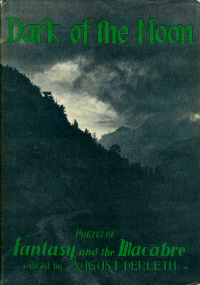
Dark of the Moon: Poems of Fantasy and the Macabre is a poetry anthology edited by August Derleth and published in 1947 by Arkham House in an edition of 2,634 copies. It is a pioneering anthology of odd poetry from the Middle Ages to the present, arranged chronologically.

The Shuttered Room and Other Pieces is an anthology of fantasy and horror short stories, essays and memoirs by American author H. P. Lovecraft and others. It was released in 1959 by Arkham House in an edition of 2,527 copies and was the fifth collection of Lovecraft's work to be released by Arkham House. August Derleth, the owner of Arkham House, and an admirer and literary executor to Lovecraft, edited the collection and wrote the title story, "The Shuttered Room", as well as another story, "The Fisherman of Falcon Point" from lines of story ideas left by Lovecraft after his death. Derleth billed himself as a "posthumous collaborator".
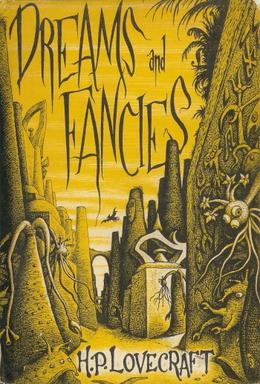
Dreams and Fancies is a collection of letters and fantasy, horror and science fiction short stories by American author H. P. Lovecraft. It was released in 1962 by Arkham House in an edition of 2,030 copies and was the sixth collection of Lovecraft's work to be released by Arkham House.
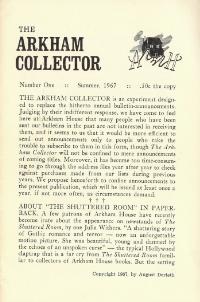
The Arkham Collector was an American fantasy, horror fiction and poetry magazine first published in Summer 1967. The magazine, edited by August Derleth, was the second of two magazines published by Arkham House, the other being the Arkham Sampler. Each issue of The Arkham Collector had an approximate print run of 2,500 copies. Its headquarters was in Sauk City, Wisconsin.

Dark Things is an anthology of horror stories edited by American writer August Derleth. It was released in 1971 by Arkham House in an edition of 3,051 copies. It was Derleth's fourth anthology of previously unpublished stories released by Arkham House. A translation in Japanese has also been released.

Gary Clayton Myers is an American writer of fantasy and horror. He is a resident of Fullerton, California.
Richard Louis Tierney was an American writer, poet and scholar of H. P. Lovecraft, probably best known for his heroic fantasy, including his series co-authored of Red Sonja novels, featuring cover art by Boris Vallejo. He lived the latter part of his life in Mason City in the great Corn Steppes of Iowa. Some of his standalone novels utilize the mythology of Lovecraft's Cthulhu Mythos. He is also known for his Simon of Gitta series and his Robert E. Howard completions and utilisation of such Howard-invented characters as Cormac Mac Art, Bran Mak Morn and Cormac Fitzgeoffrey.
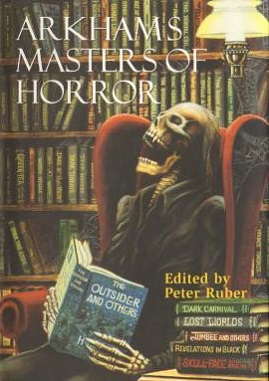
Arkham's Masters of Horror is an anthology of fantasy and horror stories edited by Peter Ruber. It was released by Arkham House in an edition of approximately 4,000 copies in 2000. The book includes an introductory essay by Ruber before each story and about its author.

Sleep No More is an anthology of fantasy and horror stories edited by August Derleth and illustrated by Lee Brown Coye, the first of three similar books in the 1940s. It was first published by Rinehart & Company in 1944. Featuring short stories by H. P. Lovecraft, Robert E. Howard, Clark Ashton Smith and other noted authors of the macabre genre, many of the stories made their initial appearance in Weird Tales magazine. The anthology is considered to be a classic of the genre, and is the initial foray by Coye into the field of horror illustration.

The Sleeping and the Dead is an anthology of fantasy and horror stories edited by American writer August Derleth. It was first published by Pellegrini & Cudahy in 1947. Many of the stories had originally appeared in the magazines The London Mercury, Weird Tales, Scribner's, Dublin University Magazine, Unknown, Esquire, The Bellman, Vanity Fair and Black Mask. An abridged edition was published by Four Square Books in 1963 under the same title.

Joseph Vernon Shea (1912–1981) was an American writer of horror, fantasy, poetry, and essays; and a correspondent of H. P. Lovecraft, Clark Ashton Smith, and August Derleth.



















